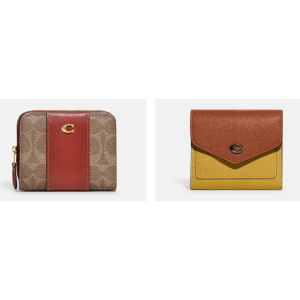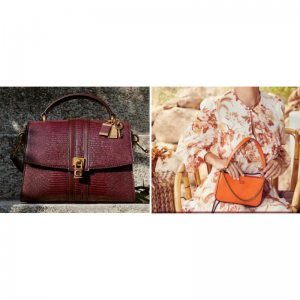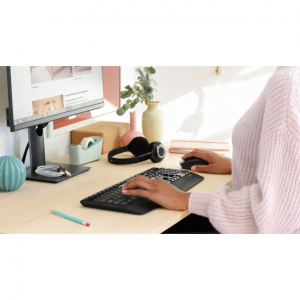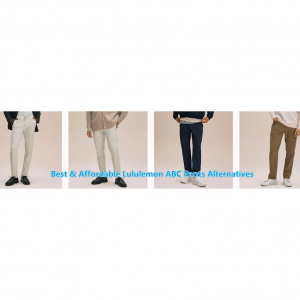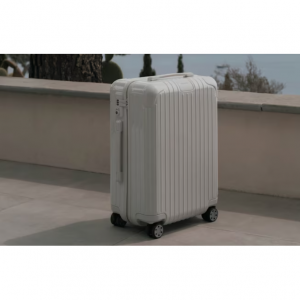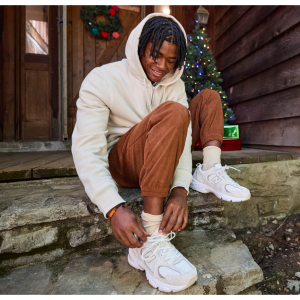
Pokemon Card Real vs. Fake Guide 2025: How Can I Tell If It Is Real?
- In recent years, the popularity of trading card games is increasing day by day and the most popular one among them is the Pokemon card. But unfortunately, with the success and extraordinarily high prices that some Pokemon cards are fetching, the sale of Pokémon cards has become rife with counterfeiters looking to pass off fake cards as the real deal. So how can you tell if a Pokémon card is real? What does a real Pokémon card feel like? How do you identify real Pokémon cards? Or how to authentic your Pokémon cards?Today in this definitive guide on how to tell if a Pokemon card is fake, we’ll explore the various methods and indicators for detecting fake cards, as well as tips for protecting your collection and dealing with suspected counterfeits.
What Is Pokemon Card?
Pokémon is a Japanese franchise that has been around for more than 20 years (2021 marked its 25th anniversary!). Short for “pocket monsters,” Pokémon exists as a TV show, a trading card game, video games and toys.
The Pokemon card game is a two-player game. In this game, players build decks around cards that feature Pokemon characters. Players use those characters to attack to defeat the opposition. The Pokemon cards are needed to power your Pokemon throughout the game. Some unique Pokemon cards are also there in the game.

Where to Buy Real Pokémon Cards?
Best In-Person Places
The best place to buy authentic Pokémon cards is at a local game store or a reputable seller. It's always going to be hard to guarantee a card's authenticity when you're buying from a seller you don't know on Facebook Marketplace, Craigslist, or an e-commerce website.
Best Online Sites
Here are a few reputable stores where you can buy legitimate Pokémon cards:
Pokémon Center: The Pokémon Center is Pokémon's official line shopping destination, so you can trust any purchase you make here.
TCGPlayer: This is a reputable online shop for buying any card collectibles.
Troll and Toad: Troll and Toad sell authentic card packs for everything from YuGiOh to Pokémon to Magic: The Gathering.
Saving Tip: If you like shopping online , don't forget to sign up at Extrabux!(What is Extrabux) , then you can enjoy up to 30+% cashback on your purchase from Extrabux! Sign-Up Bonus: Free to join it & get $20 welcome bonus! Student Benefits:As long as you are a student at school, you can get a free whole year long VIP Card worth $199.
Extrabux.com cooperates with many merchants, such as:Sephora(4% -5% cash back),Dior (Up to 6% cash back), Moosejaw (5% -6% cash back), LOOKFANTASTIC (Up to 10% cash back), Microsoft (Up to 7% cash back) and so on.
So you've got a Pokémon card, and you're unsure if it's authentic? Here are a few tips and other ways to help you figure out whether it's the real deal or a fake.
How To Spot Real Pokémon Cards
1.Inspect the Material and Size of Pokémon Cards
Fake Pokémon cards often feel quite different to genuine cards. Try bending the potential fake slightly or rub the surface of your finger across the card, and then do the same with a genuine card.
(1) The materials
A genuine Pokémon card will have a thick and high quality finish. On the other hand, fake Pokémon cards usually appear thinner and more flimsy. If you notice, real Pokémon cards are actually quite rigid and not easy to bend, whereas fake ones are easily bendable with little resistance.
In some cases, fake Pokémon cards may also appear too rough, too slick, too shiny, and the list goes on.
Finally, carefully bend the card a little, to feel the stiffness of the cardstock, and do the same with a real card. Chances are, if it’s a fake, it’ll bend easier, and feel a little flimsier.
(2)The size
Test the size and weight of the card against a real one; fakes will often be lighter, due to using lower-quality cardstock and fewer layers.
This seems like the easiest thing for the producers of fake cards to get right, but it’s not uncommon for fake cards to be slightly smaller than their authentic counterparts. When checking the size of the card, compare it with a known real card, like a basic energy card.
There are exceptions, however! Jumbo-sized cards and box topper cards also exist, though they are not as commonly collected as the normal deck-sized cards.
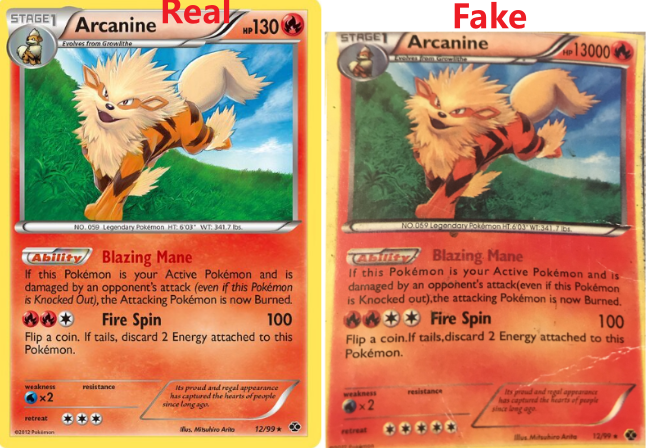
2.Inspect the Feel and Edges of Pokémon Cards
(1)The feel
The feel of a fake Pokémon card is often the first thing that gives it away as being fake. Fake Pokémon cards tend to either feel especially papery or a bit plasticy because of the low-quality materials used in their creation.
When holding a card that you believe may be a fake card, feel the surface of the card. Compare it with a card you know to be genuine. Does the card in question feel abnormally flimsy? Does the back of the card feel a bit slicks? Does the card stock feel thicker or rougher than you would expect? If you answered “yes” to any of the questions above, you’ve likely got a fake card on your hands.
(2)The edge
A real Pokémon card is made up of a sandwich of layers, with a semi-transparent black or dark grey layer in the middle. Thankfully, you don't have to rip your card to find out if it's authentic.
Just take your card, face one of the edges towards you, and look closely for a thin black line between the two halves of the card. It's very thin, but should be quite obvious up close. If you see it, your card is legit.

3.Check the Pokémon Cards Font, Kerning and Spelling
(1)The font
Fake cards will often use different fonts to those you will find on genuine Pokémon cards. It helps to get both a fake card and a real card, preferably from the same set, and compare the two.
Pay attention to not only the font type being used, but also the size of the font. Fake cards will often have font sizes a little too big or too small compared to the real deal. Often this will make text appear on a different line to what appears on the official version of the card, making fakes even easier to spot.
(2) The kerning
Kerning is the spacing between each letter in the text of the card. You’ll often find that the kerning on fake Pokémon cards is abnormally large and is usually inconsistent. There will be segments of text that appear almost normal—and segments of text with abnormally large gaps between the letters.
(3)The spelling
Besides that, look out for spelling errors, grammar mistakes, and other discrepancies like set number and illustrator name.
Common mistakes among them including spelling the Pokémon names incorrectly, having no accent i.e. " ` " sign on the 'e' of 'Pokémon' , etc. You may also see the cards spelling the attacks inaccurately, and not having any energy signs under the attack for the attack description.
Also, if you see ridiculously high HP (hit points/health points) or attack damage values, it's probably fake.
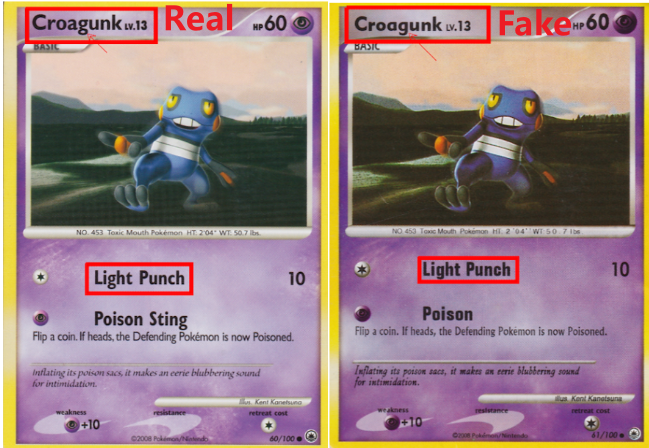
To detect fake cards, carefully examine the following elements on the card and compare them to genuine Pokémon cards:
Kerning
Misspellings
Missing accents
Variations in font size, style, or spacing of the text
Tip:However, do not rush to discard a Pokémon card if it has errors in the text. Even original cards are issued with mistakes in words, but this does not make them fakes. Google your card with an error, read the player’s forums, and then decide what to do with your collectible.
4.Look at the Back of Pokémon Cards
Genuine cards aren't just one hue of blue.Authentic Pokémon cards combine a lighter blue with other variations of blue, so you'll see dark blue and light blue being used to form the back image of a genuine card.
A fake Pokémon card will be colored light blue at the back, often having a constant shade of the same blue throughout.
Another thing to spot is the patch of blue on the top right of the Poké Ball. Most fake cards have the area filled with a single blue colour, while real cards have darker splashes of blue in the area.
Other red flags to look out for include upside down Poké Balls, disproportionately cut edges, and blurry or smudged prints.
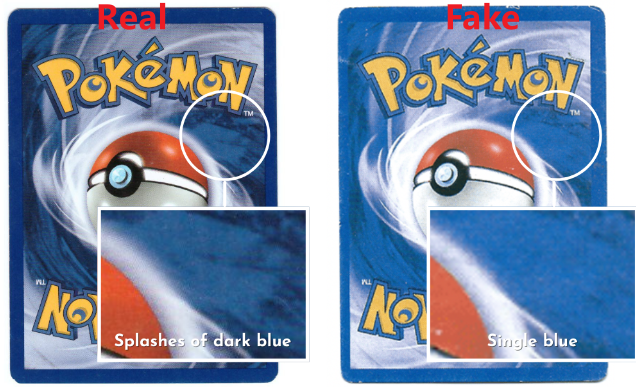
Tip: When inspecting the back of a Pokémon card, having a card you know is authentic to hand is recommended. The subtleties and amount of small details present on the back art of Pokémon cards can make them quite difficult to accurately fake.
5.Check the Energy Symbols of Pokémon Cards
Another tell-tale sign of a fake Pokémon card is in the energy symbols. The energy symbols in the real Pokémon Cards has spacing between the energy and the orb.
But on fake cards, the small, circular energy symbols are often the wrong size or design, or in the wrong position. Typically, either the coloured circle, or the superimposed symbol, or both, may be printed too large. The positions may also not line up properly with the text below, or be out of symmetry.
Energy symbols may even be missing in some cases, instead of being placed under the attack's description as they ought to be.

6. Look at the Attacks and HP
If the HP is anywhere over 300, or the attacks don't exist, then it's a fake for sure. Also, if it says (attack no.) HP instead of HP (attack no.), it is definitely a fake card because real cards display the HP first and not the attack no. first. That's only with old cards; new cards have HP 80 instead of 80 HP.
However, a few genuine cards have the variable and the attribute name inverted as a result of a printing mistake. Do not discard the card as fake without making further checks, as if the card is a genuine with a mistake, it may be valuable.
If you're not sure, do a Google image search of your card. Make sure to type in the number (found in the bottom right of the card, in the format XXX/XXX) as well as the Pokemon's name to ensure that you find an image of your exact card.

7.Look for the Holofoil Stamp
Not all Pokémon cards should have a holographic effect, and not all cards have the same holographic effect.
Often counterfeit manufacturers will make shiny cards with the wrong type of foiling or use a foiling that has never been officially released for that card. The opposite is also true. Occasionally, you will come across non-foil versions of cards that have only ever been officially released in foil versions.
Another telltale sign of a fake card is if the text or graphics on the card are blurry or fuzzy. Genuine Pokémon cards are always printed with high-quality graphics and text. So if the text on your card looks like it's been blurred or smudged, it's likely a fake.

Tip: It takes time to learn how to differentiate between real and fake holofoil patterns, but a good way is to look up actual photos of holo foil cards online to make an educated comparison.
8.Check Pokémon Cards Color and Print Quality
Authentic cards have consistent coloration and clear, crisp text. Fake Pokémon cards may have uneven or faded colors, blurry text, or noticeable pixelation.
Generally, fake Pokémon cards tend to get the colours wrong on a variety of elements. If the colours look off, or out of place, anywhere on the card, compare it directly to a real one to confirm the difference.
Pay close attention to the colours of the border and background (on both the front and back of the card). They should be sharply contrasting – if they blur or fade together, that’s a red flag for a fake.

Tip:Some of these differences are really obvious, while others are far more subtle, so look closely at cards you buy to make sure you feel confident there’s no telltale sign of a fake right in front of you.
9.Do a Light Test on Pokémon Cards
There’s also the simple, yet trusted light test: get your card, grab a torch, turn off the lights, and shine the light directly at the card, then shine it at a genuine card for comparison. Given the aforementioned tendency towards fake Pokémon cards having thinner, poor-quality cardstock, they will let through noticeably more light than the real deal.
While you’ve got that torch on your genuine card, you might be able to see a reinforcing black layer, sandwiched between two white card layers. That extra layer is supposedly missing from almost all fake cards, and some collectors swear by this as a test (usually with the aid of a magnifying glass).

10.Check the Official Trademark Symbols
It's good practice before buying sealed Pokémon card products to do a quick search for the official trademark symbols that should be present on every Pokémon card packaging - something we collectors are often guilty of forgetting to add to our checklist.
Even checking this, some couterfeiters are even printing trademark symbols their on card packs too. Double check these symbols for spelling errors or compare the shape against an official card pack as an additional check.

11.The Packaging of Pokémon Cards
(1)The materials
Cheap materials are used to make fake product boxes and you should check to see if the product comes with the plastic wrapping layer that's used on genuine boxes. Officially sealed booster boxes of Pokémon cards will be shrink-wrap in a layer of plastic that features Poké Balls on it.
The absence of the Poké Ball shrink-wrap is not a guaranteed sign that the product is counterfeit as, for whatever reason, some sellers may choose to remove this wrapping before selling products.

(2)The cutting method
Original packs are straight-cut along the top and bottom, while many fakes employ a triangle-cut, similar to what you see on many snack products.
Again, some fake Pokémon card producers have adapted to use the straight cutting style. Often though, they do not have the same sealing precision used for official Pokémon cards. This will leave larger air pockets within the sealed packs themselves.
Official Pokémon cards should not move very much, if at all inside their packs because they are sealed so precisely that there is little to no air inside. Excess card movement in a pack or visibly large air bubbles are usually a good indicator of a fake or resealed Pokémon card pack.

12.The Box for Pokémon Cards Bundle
With fake cards, the box won't have trademarks and will say something like "pre-release trading cards". It will be made from cheap cardboard, without the standard bag.
We’ll now focus on the text at the bottom of the box.This goes for bundles of multiple cards.
Authentic Pokémon Cards:
The box maintains proper kerning.
Correct spacing between characters and words.
Fake Pokémon Cards:
“Sun & Moon,” and “Seies” should be “Series” with the missing “r.”
Additionally, there’s a spacing issue with “levels! Jump.”
Spacing flaws, with characters poorly positioned and varying amounts of space between them.

13.Be Careful the Pokémon Stickers
Some fake Pokémon cards aren’t cards at all, but stickers! These are usually unauthorized stickers made to look mostly like a real card. Generally, these stickers will be a bit smaller than a real card and will often have a vibrant holo pattern that covers the entire surface of the card, like the pictured Dark Weezing.
Don’t confuse these stickers with reverse holofoil cards from the Legendary Collection set, however. Cards in the Legendary Collection, like the Charizard below, have a very lively—almost noisy—holo pattern, too! These cards will all have the same set symbol as Charizard, as the Legendary Collection was the first set to contain reverse holofoils and the last to include a reverse holofoil pattern like it.
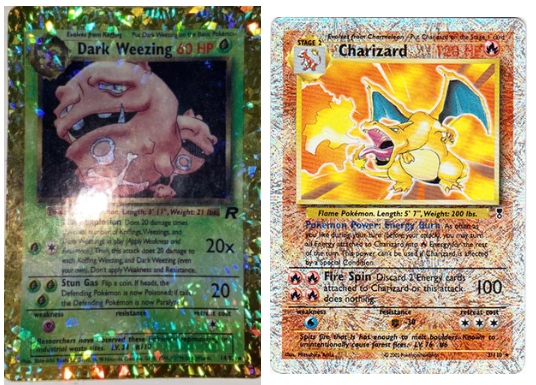
14.The Rip Test for Pokémon Cards
The Rip test can be considered the last resort for determining if a Pokémon card is genuine due to the fact, as the name implies, you will need to rip the card to perform this test.
Genuine Pokémon cards are made by layering semi-opaque paper and plastic in the middle of the card. Pokémon cards are designed in a way where if you rip a Pokémon card you should be able to see a black line of ink that follows the path of the rip.
Most counterfeit cards that have tried to replicate this black layer often do it incorrectly, if they even try to replicate it at all. If you ever perform the rip test, make sure the streak you see along the rip is black.
If the color is not black, the Pokémon card is fake. In some cases, Pokémon collectors have reported seeing blue streaks - these are also fake. However, in most cases involving counterfeit cards, you will see no streak at all.
Another way is making a small tear in it if you are certain it is a fake. Then take an old Pokémon card you don't use anymore and make a small rip in that. Compare the rate at which both ripped. If the fake one ripped faster, then it's without a doubt a fake.

How To Spot Fake Pokémon Cards Quickly?
There are situations, where you may be unable to go through each detailed step, explained above when you need to authenticate your Pokémon cards.
In summary,this quick guide should help you identify counterfeit Pokémon cards more efficiently.
Check for spelling and kerning flaws in the text at the bottom of the box.
Try bending the cards: if they bend too easily like paper, they are likely fake Pokémon cards.
Check the inscriptions on the foil packaging for spelling and kerning errors.
Verify the color of the front side of the cards, ensuring they have the correct shades of blue and orange.
Examine the seal inside the foil packaging; fake cards often have too much air.
Inspect the size of the yellow borders on the cards; fake cards may have larger borders.
How To Avoid Buying Fake Pokémon Cards?
So, you've found the perfect Pokémon card to add to your collection. But is it real? Or is it a fake?Here are a few tips to help you avoid buying fake Pokémon cards:
Look for an official hologram or seal;
Check the card's borders and ensure they're straight and even;
Compare the card to others of the same type and check for differences in colour and detail;
Read what's written on the card. Fake cards often have misspelt words or incorrect information;
Read some articles devoted to Pokémon cards;
Visit reputable forums.
How To Care For Pokémon Cards?
You've just bought a Pokémon card from your favourite shop, and you can't wait to add it to your collection and want to care for it. It's essential to take care of your Pokémon cards to keep them in good condition for years to come. Here are a few tips:
Don't bend or fold the card;
Don't expose it to direct sunlight or heat;
Keep it in a cool, dry place;
Ensure it's stored away from other cards.
If you follow these guidelines, your Pokémon cards should stay in good condition for years to come.
FAQs
1.How can you tell if your Pokémon cards are fake?
There are many telltale signs of fake Pokémon cards to look for, including the card coloring, misspelled words, foiling, and the size and weight of the card.
2.Where are fake Pokémon cards sold?
Many online stores and classified websites have fake Pokémon cards for sale. Be especially wary when buying cards from sites like Craigslist, Facebook Marketplace, and eBay.
3.What can you do if you buy a fake Pokémon card?
If you accidentally purchase a fake, you should report the seller to the site you used to buy it and contact your bank or credit card company to see if they can reverse your charges (if you paid by card).
4.What are the rarest Pokémon cards?
There's not better place to start than what many consider to be the rarest Pokémon card in existence, the Pikachu Illustrator holo. This is the perfect example of a card with a limited supply and few graded copies.
5.Are holographic common Pokemon cards worth anything?
Holographic Pokemon cards are often quite valuable. If you have a holographic Pokemon card, it’s worth taking a deeper look to determine value.
6.What is the rarest symbol on a Pokemon card?
Rare cards are marked with a star, while ultra rare cards can have a variety of unique symbols indicating their rarity.
7.How can you tell if a Pokémon card is rare?
A tiny symbol on the bottom right-hand corner will let you know the rarity of a card. A circle on your card means it’s common, a diamond indicates that your card is uncommon, and a star means it’s rare. For example, hologram cards will always have stars on them.
8.How do you play the Pokémon trading card game (TCG)?
There are lots of ways you can learn how to play the trading card game. The best way to learn is with a Trainer Kit. It comes with two ready-to-play decks that will walk your kid and a friend through the game step by step. Once your kid is used to this one, you can get started with a theme deck.
Read More:
17 Cheapest Places to Buy New & Vintage Pokemon Cards Online 2025
10 Cheapest Places to Buy Old & New Pokemon Games 2025
15 Best Places to Buy Pokemon Figures, Toys & Collectibles Online
14 Cheapest Places to Buy New & Vintage Sports Trading Cards Online 202
20+ Best Places to Buy Trading Cards Online (Pokemon, Magic, NBA, NFT, etc.)
12 Cheapest Sites to Buy Holiday Cards in Bulk 2025 (Deals & 8% Cashback)

Extrabux is an international cashback shopping site, offering up to 30% cashback from 10,000+ Stores!
Squarespace, SkinStore, MATCHESFASHION, The Wall Street Journal, NordVPN, Visible, Armani Exchange, Sam's Club, PUMA, AliExpress, Card Cash, NET-A-PORTER, Udacity, Udemy, Selfridges, LOOKFANTASTIC, Vimeo, Coach Outlet, lululemon, PrettyLittleThing, Booking.com, Ripley's Aquarium, iHerb, Groupon, etc.
Join to get $20 welcome bonus now! (How does Welcome Bonus work?)
Recommendation
-

Is Turkish Airlines Good for International Flights?
-

10 Best & Stylish Winter Coats for Women on NET-A-PORTER in 2025
-

Top & Best 12 Sneaker Apps/Websites for Raffles, Releases & Restocks in 2025
-

7 Best Gift Card Exchange Sites - Buy, Sell and Trade Discount Gift Card Safely and Instanly!
-

Top 9 Professional Skincare Brands for Licensed Estheticians 2025




